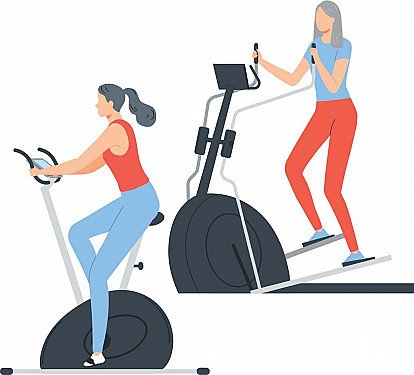No equipment necessary
Not ready to return to the gym, post-COVID? All you need for a great all-body workout is your own body weight.

Before dumbbells, 24-hour gyms, and workout videos, people exercised using only their own body weight. This is still a popular and practical choice for fitness.
"Don’t underestimate the power of moving and lifting your body weight against the force of gravity and resistance," says Robert Correia, a physical therapist assistant with Harvard-affiliated Spaulding Rehabilitation Hospital. "You can get an all-around workout by using only your body, and the results are often comparable to using weights and workout machines."
Homegrown benefits
Body-weight exercises offer many unique benefits for older adults. First of all, they are versatile: you can do them anywhere and don’t need any equipment. Body-weight training is also ideal when returning after an injury or long layoff, when you need to build endurance and confidence.
"You have greater control and comfort not having to deal with equipment," says Correia. "You can increase or lower the intensity of body-weight exercises as needed by varying your pace, position, and speed."
Another advantage: body-weight workouts can help older adults improve everyday movements. "Many exercises using body weight mirror activities like sitting up, rising from a chair, squatting to pick up something, and climbing stairs," says Correia.
There are all kinds of body-weight exercises — lunges, jumping jacks, sit-ups, squats, to name but a few — and most offer variations to fit your fitness level. But here is a three-move body-weight routine to get you started. Perform it on its own or as part of your regular workout.
Push-ups
The classic old-school exercise works several muscle groups at one time: the arms, chest, shoulders, and core. Push-ups also can be modified to fit your current ability.
1. Begin in a full plank position with your arms extended, palms flat and just below shoulder level, feet together or about 12 inches apart.
2. Keep your back straight and your weight evenly distributed.
3. Look down and lower your body until your elbows are at 90° (or go to the floor to rest, if needed) and then push back up to complete one rep. Try to take two seconds to go down and one second to go up.
4. Do eight to 10 reps while maintaining good form. (Take a break between reps, if needed.) As you improve, work toward two to three sets of 10 reps.
If this is too difficult, do a modified version from a hands-and-knees position. Another option is inclined push-ups, where you place your hands on a counter or wall at a 45° angle, which puts less strain on the wrists and shoulders.
"Whether you do push-ups on the ground or against a wall or counter, go slowly and push with a force like you are trying to move a stalled car," says Correia.
Chair squats
Squats strengthen your upper-leg and core muscles, which will improve your overall stamina and help prevent falls.
1. Sit on a chair with your feet hip-width apart. Place your hands on your thighs, by your sides, or out in front.
2. Tighten your buttocks and abdomen. Exhale and push your feet into the floor as you slowly stand up.
3. Inhale and slowly sit down. Repeat the movement eight to 10 times to complete one set and work up to three sets.
Make sure to move at a normal pace — one second to rise and one second to sit. For greater intensity, slow the pace to two or three seconds each. "The more time you can spend under tension during the movement, the harder your muscles are forced to work," says Correia. Another variation is to lower yourself until you just touch the chair seat, but don’t sit, and then stand.
Step-ups and step-downs
Step-ups strengthen your legs and are similar in motion to using a leg press machine. Any type of step is suitable for performing step-ups, like the bottom step of staircase or a sturdy step stool.
1. Stand with your feet parallel, about hip-width apart, and your arms at your sides. Maintain good posture.
2. Slowly place your right foot firmly on the step or platform while keeping your torso upright. Shift your weight forward and push your right leg into the step, straighten your right leg to raise your body up, and place your left foot alongside your right foot. Hold for a second or two.
3. With your weight on your right leg, step backward with your left leg and place your left foot on the floor in its original position. Then shift your weight to your left leg and step off the platform with your right foot, returning to the starting position. This is one rep.
4. Do eight to 10 reps; then switch, so you lead with the left foot, and do another eight to 10 reps. This completes one set. Work up to three sets.
Image: © Goodboy Picture Company/Getty ImagesAbout the Author

Matthew Solan, Executive Editor, Harvard Men's Health Watch
Disclaimer:
As a service to our readers, Harvard Health Publishing provides access to our library of archived content. Please note the date of last review or update on all articles.
No content on this site, regardless of date, should ever be used as a substitute for direct medical advice from your doctor or other qualified clinician.















